U. S. Department of Energy First Line Leadership Seminar
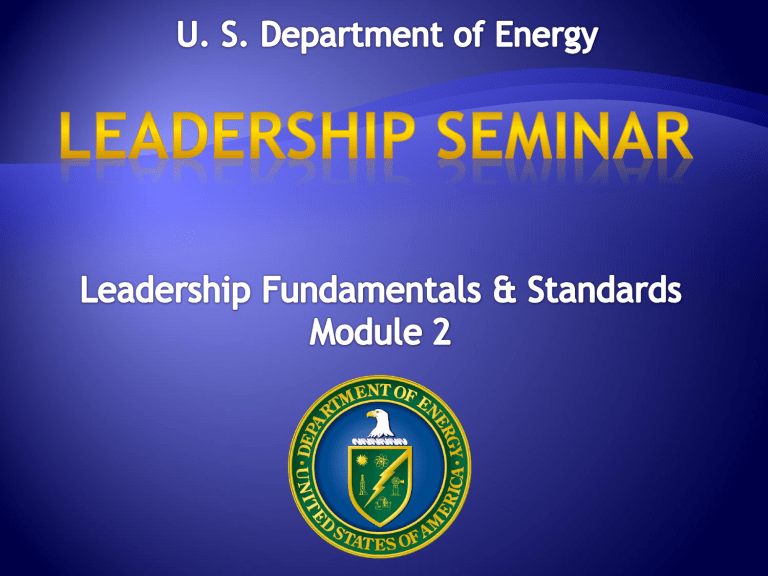
Discuss the fundamentals of leadership including core attributes and expectations for setting and maintaining a high level of standards within the DOE complex.
Leadership is the art of getting someone else to do something you want done because he wants to do it.
Dwight Eisenhower
The best executive is the one who has sense enough to pick good men to do what he wants done, and self-restraint to keep from meddling with them while they do it.
Theodore Roosevelt
What is a “Manager” to you?
What is a “Leader” to you?
Are you a Manager or Leader?
Define “Manager”
INPO FLL Seminar - A Manager is someone who conducts business.
Merriam-Webster – Someone who is in charge of a business, department, etc.
Define “Leader”
INPO FLL Seminar - A Leader is someone who is purposefully going somewhere new and inviting others to participate.
Merriam-Webster – A powerful person who controls or influences what other people do.
Develop a list of the characteristics, competencies, and behaviors of effective leaders.
7 3/10/2011
What are the Five Functions of a Manager?
Planning
Organizing
Staffing
LEADERSHIP
Controlling (Feedback and Improvement)
8 3/10/2011
Core attributes of the exceptional leader:
Has uncompromising high standards and integrity
Is willing to do the hard work of critical thinking OR enlist the help of others that can
Accepts responsibility
Maintains an upbeat positive outlook
Displays a pattern of good judgment
Is willing to deal with difficult employee issues
Source: INPO 04-003, Guidelines for Effective Nuclear Supervisor Performance
9 3/10/2011
Mission – DOE Specific
Vision – A universal leadership competency
Organizational expectations for supervisors
List the Standards important to your organization
10
3/10/2011
The U.S. Nuclear Deterrent is Essential
Deters threats from weapons of mass destruction
Assures our allies of their security
Dissuades potential adversaries from threatening U.S. interests
Defeats potential adversaries if not deterred
Value of U.S. Nuclear Deterrent isn’t the number of warheads but the credibility of our capabilities in the minds of those we seek to deter, dissuade, or assure
To achieve its psychological and political objectives, deterrence requires nuclear capabilities to be visible and credible
The DOD delivers the U.S. Nuclear Deterrent
The DOE provides the weapons and the support infrastructure
The DOE is an essential component of the U.S. Nuclear Deterrent!
11
Its what DOE sites are supposed to do
We profess that we can operate in a safe environment by following procedures
HROs are proactive – not reactive
Focus on improving the external environment –not waiting to fix the bad response to the environment (unhealthy safety culture)
Get out in front of the schedule to avoid becoming a victim to it
An integral part of high reliability is understanding organizational culture
What it does for you - strengths
What it does to you - inhibitors
If you proactively fix the environment –production will increase, safety/security/quality will improve and the culture will be healthy
12
Lead by example
Meetings
Manager Observations
Procedure Adherence
Pre-Jobs, Operations, Post-Jobs Briefings
Training
Lessons Learned
What you get, is what you reinforce
What you measure, becomes what is important
Standard of Silence - Omission is permission
“What is of interest to my boss, is fascinating to me!”
Challenge inappropriate behavior
Hold others accountable
Provide Performance Feedback
Provide coaching at all levels
Follow up on issues/concerns and give feedback
Use Reinforcement for good/bad behaviors
Raise the bar
Be a role model and set the example
Conduct yourself professionally and not emotionally
Be consistent in expectations
Leadership
Employee Engagement
Becoming a Learning Organization
Leaders create, maintain, and change culture
Managers act within culture
16
HRO Definition:
An organization that repeatedly accomplishes its high hazard mission while avoiding catastrophic events, despite significant hazards, dynamic tasks, time constraints, and complex technologies.
Do you feel that your work environment should be an HRO?
High Reliability Operations: A Practical Approach to Avoid the System Accident; Dr. Richard Hartley
• Safe, Secure, and Quality Workplace
• Sustainable and reliable work processes
• Job Security
• Certainty of Future Missions
• Customer Satisfaction
Leaders set the stage as to the expectations of work performance (good or bad) and most employees will strive to meet or exceed those expectations. If management allows a standard of silence by not addressing safety, security or quality issues, then they set a less than adequate safety, security or quality culture. However, a true leader will reinforce good practices and/or coach/mentor poor practices, they set high standards of expected work and behaviors in the work environment.
20
Individual Accident
System Accident
• Ensure system provides safety
• Manage system, evaluate variability
• Foster culture of reliability
• Model organizational learning
HRO Practice
#1
Manage the
System, Not the Parts
HRO Practice
#2
Reduce
Variability in
HRO System
• Generate decisionmaking info
• Tiered approach
• Refine HRO system
HRO Practice
#4
Learn & Adapt as an
Organization
HRO Practice
#3
Foster a Strong
Culture of
Reliability
• Deploy system
• Evaluate operations – meas. variability
• Adjust processes
•Provide capability to make conservative decisions
•Make judgments based on reality
•Openly question
& verify system
HE Machining Incident
What is The Hardest
Button to Push?
All rights reserved © B&W Pantex 2011
All rights reserved © B&W Pantex 2011
27
Ensure system provides expected outcome
Manage system, evaluate variability
Foster culture of reliability
Model organizational learning
28
Leadership is one of the key attributes of a successful HRO. Without key senior leadership driving toward an HRO, change will never occur within an organization. Safety, Security and
Quality are leadership objectives that should be shared by all levels of Management. We should be learning from our mistakes, leaning out our processes and implementing continuous process improvements throughout the organization.
The most important thing, is to keep the most important thing, the most important thing.
Stephen Covey, 8 th Habit
Focus on what is important
Measure what is important
Intelligent, rational, objective, tough
Steady, hardworking, deliberate, orderly, dependable
Creative, quick-thinking, sees big picture, cheerful, open
Dreamer, preoccupied with the opposite sex, playing golf, and beer
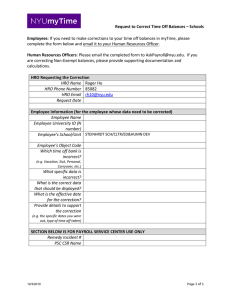
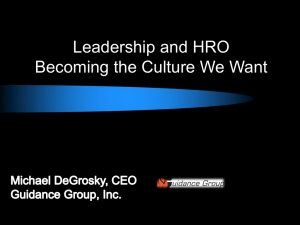


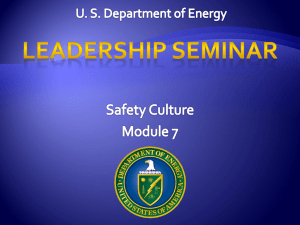
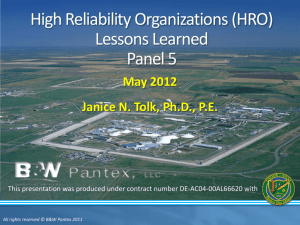
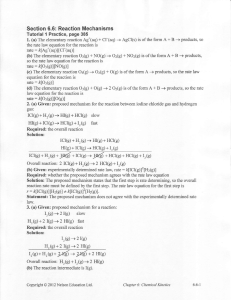
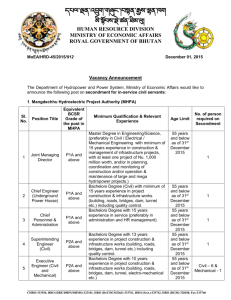
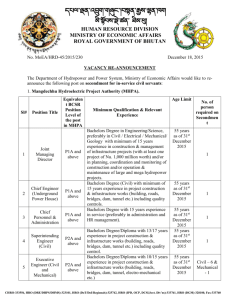
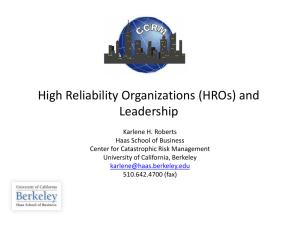
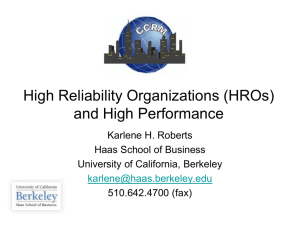
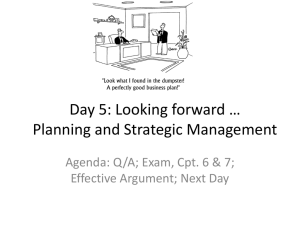
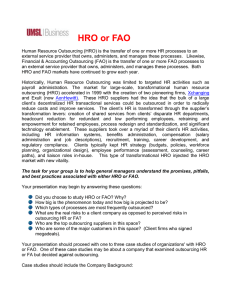
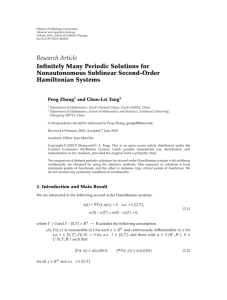
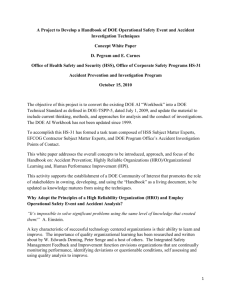
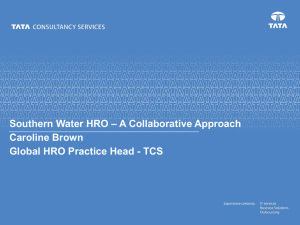
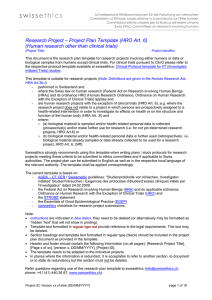


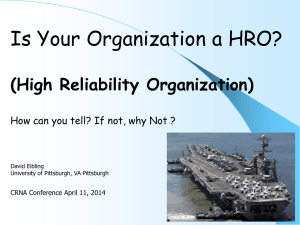

![The Politics of Protest [week 3]](http://s2.studylib.net/store/data/005229111_1-9491ac8e8d24cc184a2c9020ba192c97-300x300.png)